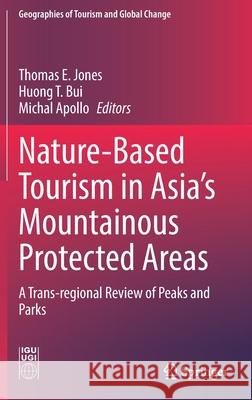Nature-Based Tourism in Asia's Mountainous Protected Areas: A Trans-Regional Review of Peaks and Parks » książka
topmenu
Nature-Based Tourism in Asia's Mountainous Protected Areas: A Trans-Regional Review of Peaks and Parks
ISBN-13: 9783030768324 / Angielski / Twarda / 2021 / 316 str.
Kategorie BISAC:
Wydawca:
Springer
Seria wydawnicza:
Język:
Angielski
ISBN-13:
9783030768324
Rok wydania:
2021
Wydanie:
2021
Numer serii:
000820182
Ilość stron:
316
Waga:
0.65 kg
Wymiary:
23.39 x 15.6 x 2.06
Oprawa:
Twarda
Wolumenów:
01
Dodatkowe informacje:
Wydanie ilustrowane











